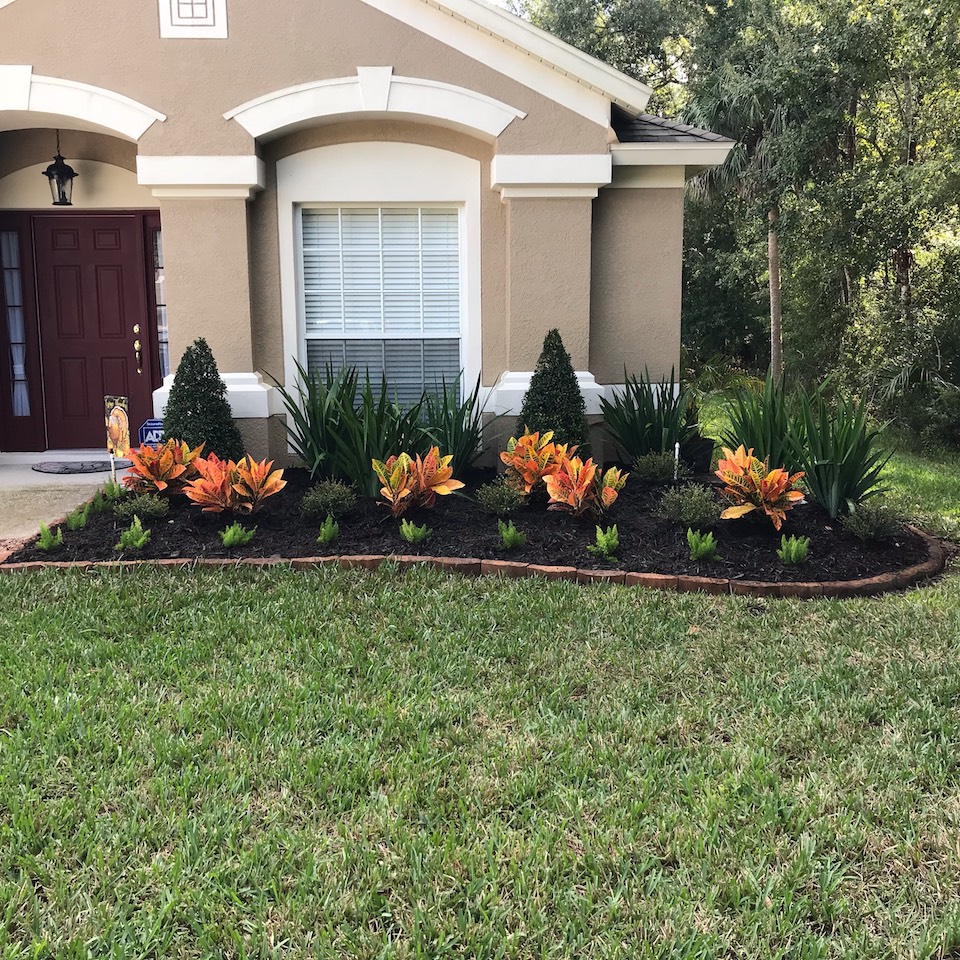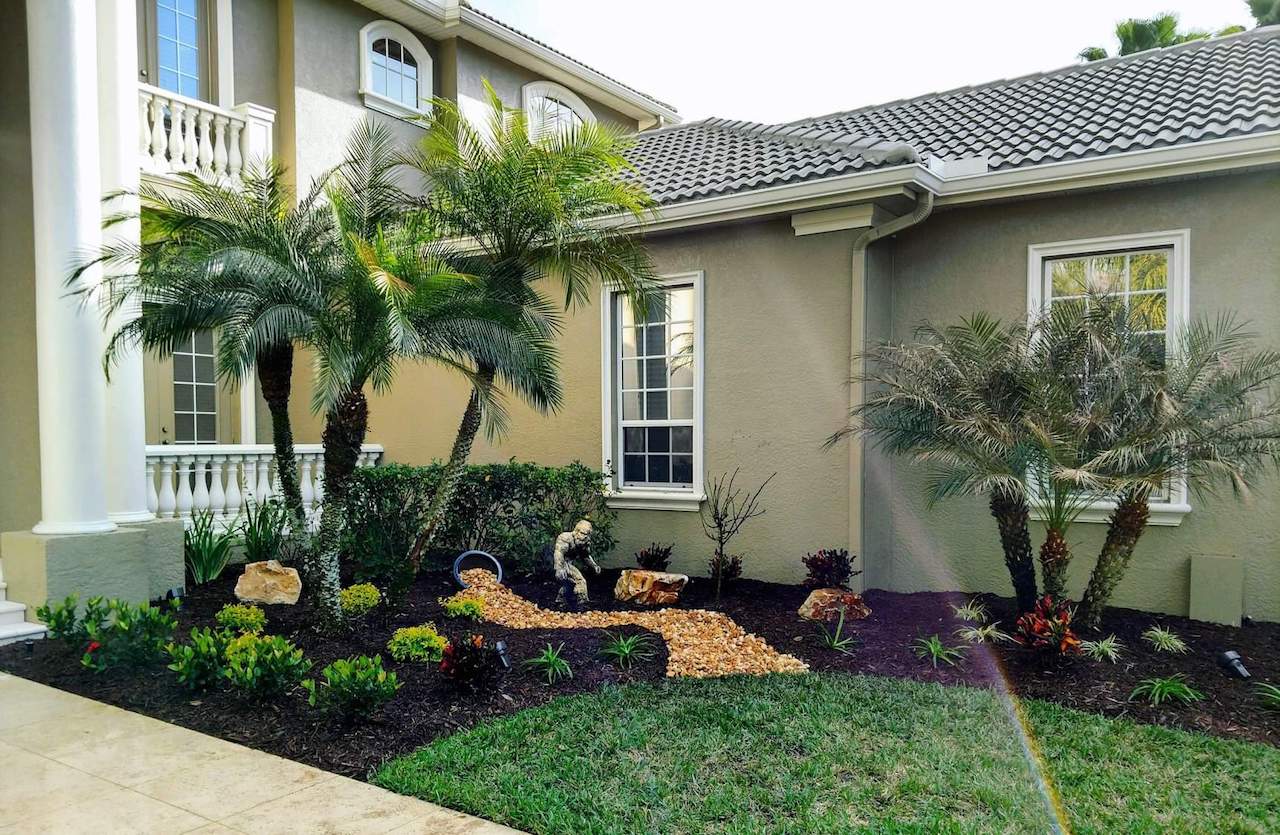Explore Creative Solutions with Professional Palm Desert Landscaping
Explore Creative Solutions with Professional Palm Desert Landscaping
Blog Article
A Comprehensive Guide to Designing and Implementing Effective Landscape Design Solutions
The art and science of landscape design extend beyond plain appearances; they include a thoughtful integration of style concepts, environmental stewardship, and functional execution. What techniques can one use to ensure these landscapes not only prosper but likewise thrive in harmony with their environments?

Understanding Landscape Design Concepts
One might question what fundamental aspects add to efficient landscape design. At its core, effective landscape design pivots on a number of essential concepts that assist the arrangement and option of aspects within a space. These concepts include unity, percentage, rhythm, and balance, each offering to create an unified outdoor setting.
Unity refers to the natural relationship amongst various elements, ensuring that they function together visually and functionally. Equilibrium can be accomplished via in proportion or asymmetrical arrangements, enabling the landscape to really feel stable and inviting. Percentage involves comprehending the scale of elements in connection to each various other and the surrounding atmosphere, advertising aesthetic harmony and comfort.

Examining Your Outdoor Space
Before carrying out the concepts of landscape layout, a complete analysis of your outdoor space is crucial. This first evaluation helps specify the extent of your landscape design task and ensures that your style lines up with the special features of your residential or commercial property. Begin by assessing the dimensions of your space, taking accurate measurements to comprehend the offered area for numerous aspects such as outdoor patios, gardens, and pathways.
Following, observe the existing functions of your landscape, including topography, soil quality, and water drainage patterns. These variables significantly affect plant option and positioning. Furthermore, evaluate the sunlight direct exposure throughout various areas throughout the day, as this will influence the kinds of plants that prosper in your garden.
Consider the microclimates created by frameworks, trees, and other obstacles, as they can influence temperature level and wetness levels. Lastly, keep in mind of any existing plants or hardscape components that you desire to keep or remove. This comprehensive analysis prepares for a well-informed and effective landscaping remedy, making sure that your design is not just visually pleasing but sustainable and also practical for years ahead.
Lasting Landscaping Strategies
Integrating lasting landscaping strategies is vital for producing an ecologically accountable outdoor room. These practices not just promote eco-friendly balance yet likewise boost the functional and visual value of a landscape. One fundamental technique is the usage of native plants, which call for less water and upkeep while supporting regional wild animals. Carrying out reliable irrigation systems, such as drip watering, decreases water waste and guarantees that plants obtain sufficient wetness.

An additional reliable technique is the tactical positioning of shrubs and trees to give natural windbreaks and color, hence lowering energy costs (Palm Desert Landscaping). Rain yards can be incorporated right into the landscape design to manage stormwater overflow properly, filtering system contaminants prior to they get in rivers
Choosing the Right Plants
Selecting the right plants for your landscape is important to attaining both aesthetic allure and eco-friendly consistency. The procedure starts with an understanding of your neighborhood climate, soil conditions, and the certain microenvironments within your landscape. Analyzing variables such as sunshine direct exposure, dampness degrees, and existing vegetations will certainly aid you pick plants that grow in your special setup.
Take into consideration including indigenous plants, as they are well-adapted to neighborhood problems, need less maintenance, and support neighborhood wild animals. In addition, choosing a diverse range of species can enhance biodiversity while reducing the risk of condition and bug break outs. It is necessary to examine the growth practices, blooming durations, and seasonal shades of potential plants to create a dynamic and cohesive landscape.
In addition, think of the intended use the area; for instance, if the area will certainly experience high foot web traffic, go with resistant ground covers. By thoughtfully choosing plants that align with both your visual goals and ecological requirements, you can produce a sustainable landscape that not just enhances your residential property however also adds positively to the surrounding ecological community.

Application and Upkeep Strategies
When the right plants have actually been picked for your landscape, the emphasis shifts to efficient execution and continuous upkeep techniques. Effective installment starts with correct site preparation, that includes soil screening to identify nutrient levels and pH, followed by modifying the dirt as required. Meticulously set up plants according to their development habits and light needs, making certain appropriate spacing to advertise healthy growth.
Watering is a crucial aspect of application. Develop a watering timetable that considers the details requirements of each plant types, readjusting for seasonal adjustments. Making use of drip watering systems can boost water effectiveness and lower drainage.
Maintenance techniques must be executed to guarantee the long life and vitality of your landscape. Routine jobs include weeding, mulching, and pruning to manage development and prevent illness. Fertilization ought to be carried out based on dirt examinations, supplying the essential nutrients without over-fertilizing.
Keeping an eye on for insects and diseases is essential; early discovery can prevent significant damages. Seasonal modifications to upkeep routines, such as winterizing see this page perennials and preparing for spring development, will make certain that your landscape remains visually enticing and healthy year-round.
Conclusion
In final thought, efficient landscaping remedies require a detailed understanding of layout principles, meticulous assessment of exterior spaces, and the application of sustainable techniques. The choice of appropriate plant More Info species plays an essential function in boosting visual allure and ecological resilience - Palm Desert Landscaping. Effective execution and recurring upkeep further ensure the durability and vitality of landscapes. By integrating these aspects, landscapes can be transformed right into beautiful, practical settings that promote biodiversity and add favorably to area well-being.
One may wonder what foundational components contribute to effective landscape style. At its core, effective landscape design hinges on numerous key principles that assist the arrangement and option of aspects within a room.Picking the right plants for your landscape is important to attaining both visual appeal and environmental harmony. It is vital to review the development routines, flowering periods, and seasonal colors of potential plants to create a vibrant and cohesive landscape.
As soon as the right plants have actually been picked for your landscape, the focus moves to effective link execution and ongoing upkeep methods.
Report this page